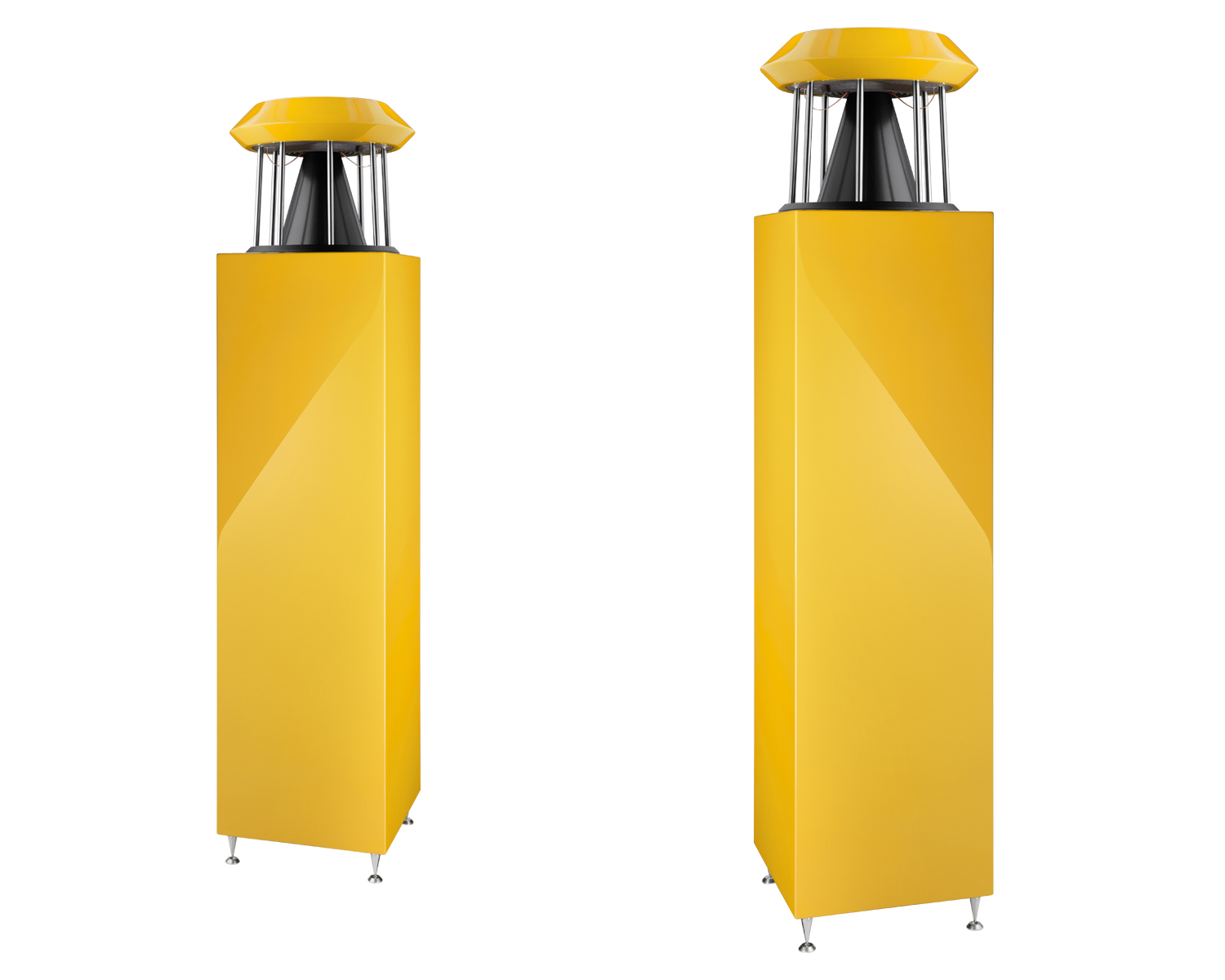capable of over 100 db is pretty useless
Peaks or average? That is ear damage territory.
dave
Earl Geddes et al have done a lot of work mapping the the spectral energy of speakers. Irrc, a common problem is a mismatch in the XO region between a midwoofer that has started beaming, and a tweeter that is omni in the same range. This gives a lumpy off-axis response and could help to (negatively) localise the speakers rather than the virtual image that they're trying to convey.
A problem that a WAW with an XO at or below the quarter wave criteria will not suffer from that at all.
dave
diffraction problem
The diffraction signature of a loudspeaker is important if you want them to ‘disappear”, an important consideation to maximise DDR and all teh wonderfull things that brings.
dave
But in larger spaces it can be amazing! I was very surprised.
A a pr of German Physics DDD omnidirectional produced quite good sonics in a more or less bigish cubic hotel ballroom at the show.

dave
Last edited:
Thanks to China efficiency (41hr after ordering) I have the 5W 86dB 5cm Mg cone mono-suspension Alpair in oak 3.5L BR and listened for a very few minutes before work. Need to warm up both speakers and amp. Tone sweep 250hz hump due to cab otherwise quite good. Dvorak symphony bass drum... not comparable to my 5" TLonkens of course but I'll wait till after work to pass judgment.
Seems to play mid-hi (brass) loud enough in a smallish bedroom. I don't know what 110dB transcient means in mid-hi range.
Seems to play mid-hi (brass) loud enough in a smallish bedroom. I don't know what 110dB transcient means in mid-hi range.
Mg cone
Aluminum alloy with more tham Mg in it. Mark’s personal recipe.
Picture/drawing of the box?
dave
Thick fingered-oak slot-loaded, I'll open them up tonight to measure slot and maybe compare TLonken with 1-2L sealed etc. According to product page 150x240x195ext so guesstimate 114x177x159int ~3.2L excluding slot.
Slot ~10x114x100.
Slot ~10x114x100.
Attachments
Last edited:
These speakers are sold by the official Markaudio taobao store. I got them >2nd-hand for about the price of drivers.
So Evan designed that box given the name. He did the A7p too. Not th best MA driver.
The rounded corners on the diagonal; look strange.
dave
The rounded corners on the diagonal; look strange.
dave
That’s questionable at best…….there’s no predictability for a point source‘s power response in a closed space……you can only measure and design according to that closed space……the problem the forementioned Beolab speaker attempts to overcome.The diffraction signature of a loudspeaker is important if you want them to ‘disappear”, an important consideation to maximise DDR and all teh wonderfull things that brings.
dave
Slot 9x114x90.114x177x159int ~3.2L excluding slot.
TLonken 1m planned.
Attachments
I was merely high lighting one of the flaws in the “fullrangers are lacking “ argument. Plop a super tweeter on anything then at 10khz and up…….if these were truly ‘critical’ listeners then the phase overlap would be readily apparent….it’s the destructive interaction with the the wide band driver that should be obvious at and around the XO point.C to C gets a bad rap these days. Sure, a bad crossover is a problem, but not all crossovers are bad.
One factor that may be of interest here is that we are less sensitive to the issue you mention when at supertweeter crossover frequencies, kind of like the way we also are sub 1kHz.
Part of my LONG journey as first a hifi enthusiast and then on to live sound engineer and now recording and mix engineer is that Audiophiles are always chasing their youth…….that period of time between 16 and 22 years when things were at their best in both hearing acuity and the cocktail of hormones mixed with music that spoke to that generation. NOTICE how this is such a male dominant sport for instance……women have better hearing in higher frequencies over a longer time line…..and then they begin a very nice high pass filter implementation where 100-2000 gets a passband treatment of sorts where identifying distinct sounds in space is easier. Off axis is always superior for women and well……..notice their frustration when trying to have a discussion with their male counterparts at 180 degrees or through walls?
I’ve come to accept what I can hear and what matters…..and if I’m being completely transparent here……the illusionary stereo triangle no longer fits the bill…..not against 8-11 Channels of discrete audio mixed and mastered with care. I can‘t highlight enough that everyone within this hifi space needs to experience this done properly just once…..
Okay okay...all is right except the last paragraph: the stereo illusion has dawned, yes, indeed it is two binary tracks that represent
the flowing in time and space of the same event.
About multi-channel, yes, also! Is it available for my two tracks analog stereo? No, eh?! I guess it's available only in digital format, what else!? The two-channels-done-with-care are not well explored yet, I must say, so why going further ( Occam's Razor behind...)
the flowing in time and space of the same event.
About multi-channel, yes, also! Is it available for my two tracks analog stereo? No, eh?! I guess it's available only in digital format, what else!? The two-channels-done-with-care are not well explored yet, I must say, so why going further ( Occam's Razor behind...)
- Home
- Loudspeakers
- Multi-Way
- Are modern fullrange drivers better than tweeters?



